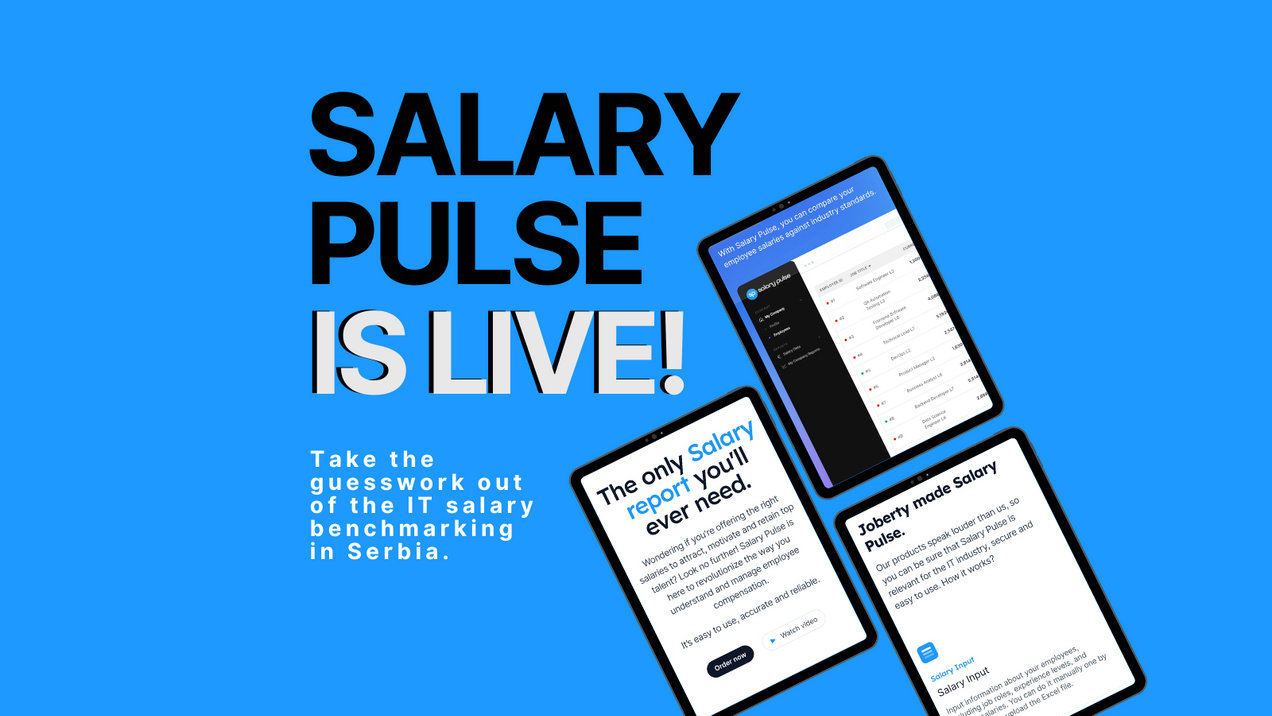
Employer Value Proposition
With so much competition out there, attracting and keeping highly skilled employees can be challenging. Gone are the days of “just be grateful you have a job” as more and more people are opting for companies that can offer them more than just a paycheque. Your company’s employer value proposition (EVP) can either make or break your chances of finding and retaining talented professionals.
But what is an employer value proposition? Does my company need one? And if so, how do you go about building one? In this article, we answer all those questions so you can start attracting and keeping the best professionals on the market.
What is an employer value proposition?
The EVP of a company highlights the benefits and rewards that are offered to attract and retain talented employees. It outlines why someone should choose to work for a specific company over its competitors. An EVP helps define the company's culture, values, and overall employee experience.
Does my company need an EVP?
It’s essential for companies to have an EVP as it helps attract top talent, increases employee engagement and loyalty, and ultimately contributes to the overall success of the organization.
Let’s break this down even further:
Attract top talent
EVP helps companies differentiate themselves from competitors and attract the best candidates. It showcases the unique benefits, culture, and opportunities that the company offers, making it more appealing to potential employees.
Retain employees
The EVP of a company plays a crucial role in employee retention. By clearly communicating the value proposition, companies can align employee expectations with what the organization can provide. This leads to higher job satisfaction, engagement, and loyalty, reducing turnover rates.
Enhance employer brand
Creating a positive image for your current and prospective employees is crucial for any company. Your company’s EVP helps shape this. Having a good reputation as an employer can also help improve how customers view your company and can even help you get more business.
Improve employee engagement and productivity
When employees feel that their needs, aspirations, and values are met through the EVP, they are more likely to be engaged and motivated in their work. This, in turn, leads to increased productivity, better performance, and higher levels of innovation.
Align organizational goals
EVP can align employee goals with the overall objectives of the company. When employees understand how their contributions directly impact the success of the organization, they’re more likely to be committed and work towards achieving those goals.
Reduce recruitment costs
A well-defined EVP can reduce recruitment costs by attracting candidates who are genuinely interested in the company and its offerings. It helps filter out individuals who may not be a good fit, saving time and resources in the hiring process.
Who is responsible for developing an effective EVP for your company?
Developing an effective EVP is a collaborative effort that involves various teams and individuals within a company. However, the Human Resources (HR) Department is responsible for understanding the company's culture, values, and goals. They’re the ones who work closely with other departments to align the EVP with the company's overall strategy.
Here are a few others that are typically involved in the process:
- Marketing Department
- Leadership Teams, including senior executives and managers
- Existing Employees
- External Consultants
How to build your employer value proposition
Now that you know who should be developing your EVP, how do you go about building one?
Every company has something unique to offer its employees. Articulating those unique benefits and values is what will create an effective EVP. Here is a clear and easy-to-understand step-by-step guide with examples to help you create your company's EVP.
1. Understand your organisation
Begin by conducting research and gathering information about your company's culture, mission, values, and overall employee experience. This will help you identify what sets your organization apart from others. Research can be done by creating and sending out employee surveys, using websites such as Joberty to research your company’s rating, and reading reviews from past employees.
2. Define your target audience
Determine the specific group of employees you want to attract and retain. Consider their preferences, motivations, and aspirations.
For example, attracting and retaining software developers differs significantly from attracting someone for a customer service role. Software developers would want the opportunity to work on cutting-edge technologies, complex projects, or innovative solutions. Showcase the impact that developers can make through their work, such as developing software that improves people's lives or disrupts industries.
RELATED: How to Hire Developers For a Startup
3. Identify key benefits
Analyze the various parts of your organization that make it an attractive place to work. This may include competitive salaries, work-life balance, a supportive work environment, or unique perks and rewards.
For example, 70% of tech professionals stated that job flexibility (including remote work), career development opportunities, leadership, and company culture had a significant impact on their willingness to pursue and remain in a new job.
4. Highlight your company's culture and values
Emphasize the core values, beliefs, and practices that define your organization. This helps potential employees understand the environment they will be a part of and how their values align with those of the company. The culture of your company will significantly impact your EVP and who you attract.
HubSpot has a powerful EVP, with culture being a key value. On their careers page, they highlight that their company culture is just as important as the growth of their company.
5. Differentiate from competitors
Identify what makes your organization stand out from other employers in your industry. Focus on the aspects that set you apart and appeal to your target audience.
At Google, their EVP highlights their strong dedication to hiring individuals with disabilities.
How to craft a compelling EVP statement
Consolidate all the information you have gathered from the above steps into a concise and compelling statement. It should clearly communicate the unique benefits and values your organization offers to employees.
Try to avoid buzzwords or industry jargon, as they can make your company sound like a faceless entity. Instead, make it memorable, authentic, and aligned with your company’s brand.
When writing your company’s EVP, ask yourself these three questions:
- What can your company offer?
- What is the competition offering?
- What is the experience like for employees on their first day of work?
A great EVP will answer all these questions and will strike the perfect balance between company and employee needs.
EPV Best Practices
Here are some best practices to follow that will help create a compelling EVP that helps attract, engage, and retain the right employees for your business's success.
Be authentic
The EVP should accurately reflect your organization's culture, values, and employee experiences. It should avoid making exaggerated claims that may not align with the reality of working in your company.
Be different
An effective EVP should clearly differentiate your company from its competitors. It should highlight what sets it apart and why someone will want to work here over somewhere else.
Be consistent
A consistent EVP across all touchpoints, including job advertisements, career websites, interviews, and employee communications, is essential. This creates a cohesive and authentic employer brand experience.
Test and refine your EVP
Once you’ve drafted the EVP statement, share it with current employees and other stakeholders for feedback. Make necessary adjustments to ensure it accurately represents your organization and resonates with your target audience.
Communicate and promote
Once finalized, incorporate the EVP into your recruitment materials, job postings, career website, and other communication channels. Continuously promote and reinforce your EVP to attract and engage talented professionals.


